Dang-shen, pilosula (Codonopsis pilosula) seeds, organic
$4.95
Family: Bellflower (Campanulaceae)
Hardy to Zones 3 to 9
(Dang-shen, Poor Man’s Ginseng) Twining and vining perennial native to China. Traditional usage (TCM): builds chi and tonifys the blood. A soft and pretty climber with bell-shaped blossoms. The roots are crunchy, very sweet, quite delicious. The herb in TCM is the pressed and dried, rolled root that is sugary and chewy. Highly recommended. Plant prefers full sun to part shade and something to climb on–preferably another plant but lacking that at least a string. Sow in spring. Watch out for gophers, these roots are tastier than carrots!
Packet contains 50 seeds
1 g contains ~2,500 seeds
5 g contains ~12,500 seeds
10 g contains ~25,000 seeds
Certified Organically Grown

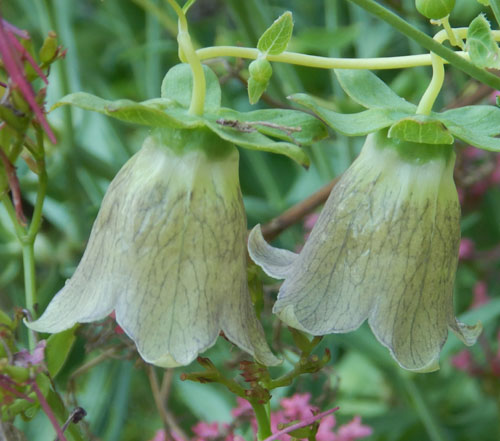

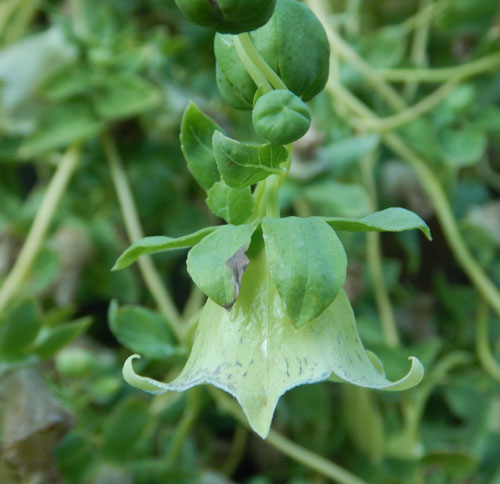
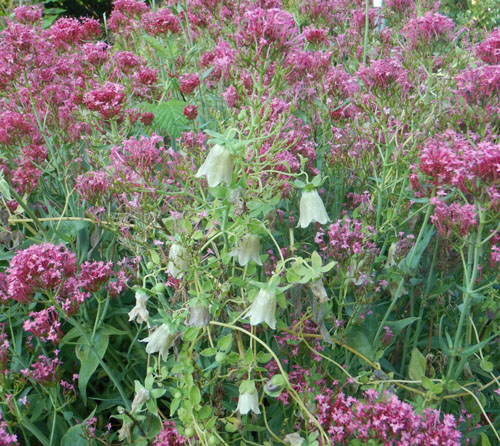
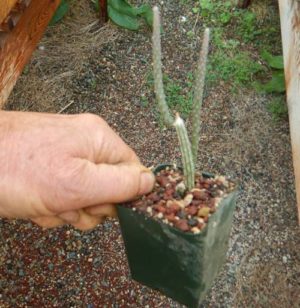
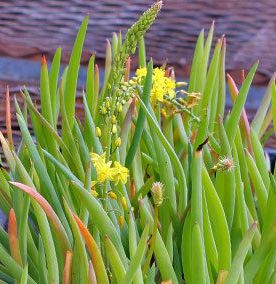
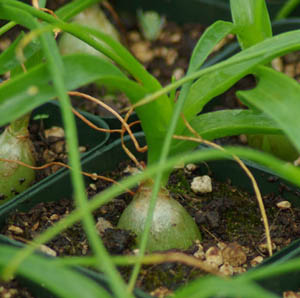
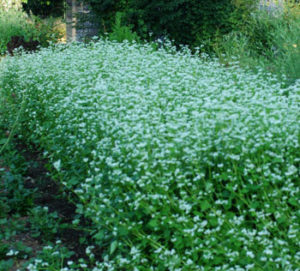
Question
thenaekedgardener (verified owner) –
Hello Richo, has been a long time since I’ve asked any question.. hope your year has been fruitful my friend.
Was thinking of starting some Codonopsis seeds in late august on the north side of the back behind greenhouse, allowing to grow wild-what say you for late summer, warm planting (germination) of Dang-shen?
Been pick-axing quite (A lot) often so as the rain and/or southern hot sun permits; mosquitos always thirsty to the already challenging conditions. Never the less, while drenching my clothes daily in my very own- taking sweat baths is the daily routine, putting in giant pitted double dug raised beds filtering stones and collecting at the edges for erosion and winter heat sinks.. has been only 21 months now since this journey of trials has since began.. have worked only by hand no power tools or machinery what soever, no help but my left hand to my right, no outside resources, no ammendment of any kind, absolutely no bought bags of soil; just my own compost and a plethora of organic materials all around me… beds were limited and scarce the first summer, now second summer and have an ongoing improvement to at least 18 giant beds in the works always adding organic matter and grit; expanding edges, the endeavor is they eventually link up through subterranean trenches filled in with mass organic materials; creating a giant linked fungal network up and over connecting all micro-environments from mediterranean to meadow to deep forest to field to the tropics and lowland aquaculture back to dry slopes and mesic mounds… thank you Richo for all your inspiration and passion you give humble gardeners like myself to strive for a better world in symbiosis with nature for which we all are one, and one part whole. -naeked
Upvote if this was helpful (0) Downvote if this was not helpful (0) Watch Unwatch Flag for removal
Richo Cech –
Any herbaceous perennial does well fall-planted, it is in accordance with their natural tendency of seed drop, germination, and seasonal growth, senescence and regrowth.
Upvote if this was helpful (2) Downvote if this was not helpful (0) Flag for removal
thenaekedgardener (verified owner) –
Thank you for guidance and affirmation. Would any species of woody perennial or species like sage and greek mountain tea work well too fall germinated (late summer)? I think I already know, just appreciate some advice making sure my efforts are worthwhile. Thank you
Upvote if this was helpful (0) Downvote if this was not helpful (0) Flag for removal
Richo Cech –
hi naek, i think so, it is always more challenging to direct-seed these things and there can be losses due to lack of control, but on the other hand the advantage is less plastic and a naturally formed root system. Outdoor prop beds would seem right up your alley. richo
Upvote if this was helpful (2) Downvote if this was not helpful (0) Flag for removal
thenaekedgardener (verified owner) –
Great growing, naturally.. Inward, forward, outward and onward; OM power of swirling creation give breathe vibration forth ward our sacred incantation… my beloved fellow friend -naeked
Upvote if this was helpful (0) Downvote if this was not helpful (0) Flag for removal
Ben Feldman (verified owner) –
I’ve been growing these indoors and outdoors. My indoor growers are on 14 hours of light and are HUGE! Outdoor is super happy as well, but focused on root development.
My germination rate has been 100% on these seeds.
Upvote if this was helpful (3) Downvote if this was not helpful (0) Watch Unwatch Flag for removal
Richo Cech –
Hi Ben, Right, you made the point that I was going to make when I started to read this, that long light hours are going to promote aerials and outdoor growing will probably make more roots. You’ve done a good job characterizing this plant. BTW, it is among the most useful of antistroke prophyllactics. Richo
Upvote if this was helpful (2) Downvote if this was not helpful (0) Flag for removal
Marie Irene Knoll –
Great germination. Love the plant.
Upvote if this was helpful (0) Downvote if this was not helpful (0) Watch Unwatch Flag for removal
katie –
just curious if the flowers hold up well in water when cut?
Upvote if this was helpful (0) Downvote if this was not helpful (0) Flag for removal
Richo Cech –
Hello Katie, Normally cutflowers are upright with sturdy stems. Codonopsis is a downward-facing bellflower on a floppy stem.
Richo
Upvote if this was helpful (0) Downvote if this was not helpful (0) Flag for removal
Danielle (verified owner) –
Hi Richo, in the introduction to medicinal herbs seeds C-D you mention that codonopsis is very delicate and the mark of a good gardener. I’m wondering what you mean by this. I had great germination rate from the seed packet I bought from you. The seedlings have been in the ground for about 3 weeks now and haven’t put on much growth. Any insights?
Upvote if this was helpful (0) Downvote if this was not helpful (0) Flag for removal
Richo Cech –
Hi Danielle,
Because the plant can fall prey to any number of accidents, from burrowing animals eating the sweet roots to clueless people pulling up a tall weed that is meanwhile a preferred trellis for codonopsis, well, then actually bringing this plant to fruition is the mark of a good gardener, who knows how to avoid these pitfalls.
Richo
Upvote if this was helpful (2) Downvote if this was not helpful (0) Flag for removal
Pill bugs –
Can this plant skip dormancy when grown indoors as a ornamental?
Upvote if this was helpful (0) Downvote if this was not helpful (0) Flag for removal
Richo Cech –
Hi Pill, I find that Codonopsis really appreciates the dormancy and is healthier for it.
Richo
Upvote if this was helpful (0) Downvote if this was not helpful (0) Flag for removal
Melody –
Such a splendid plant, the bees adore it and I enjoy the distinctive flowers and odor reminiscent of pot. I did have to make sure to plant in my least vole-ified area to get roots. I do tend to vilify the voles as the do enjoy tasty roots like these…..
Upvote if this was helpful (2) Downvote if this was not helpful (0) Flag for removal
Richo Cech –
i too am want to vilify voles
Upvote if this was helpful (2) Downvote if this was not helpful (0) Flag for removal
Michael Monaghan –
Hi Richo
I grew Codonopsis in Seattle area and it did very well. How would it do in Central North Carolina. Would I need to manipulate this some how to grow better, thinking Codonopsis likes cooler conditions in the summer time?
Mike
Upvote if this was helpful (1) Downvote if this was not helpful (0) Flag for removal
Richo Cech –
hi michael, codonopsis is almost always happiest growing on another plant. that means its shaded. i do think it can take a lot of heat, though. richo
Upvote if this was helpful (1) Downvote if this was not helpful (0) Flag for removal
Michael Monaghan –
A quick note: Hardware cloth with raised beds eliminate those under ground dwellers. My proferred method.
Upvote if this was helpful (1) Downvote if this was not helpful (0) Flag for removal